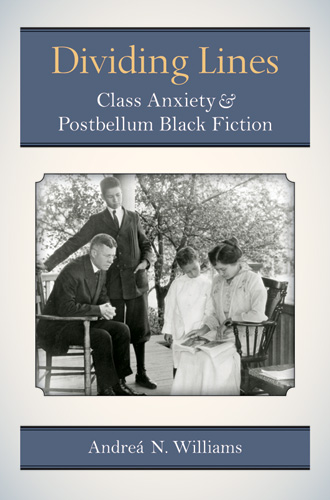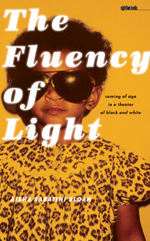Dividing Lines: Class Anxiety and Postbellum Black Fiction
University of Michigan Press
2013
232 pages
6 x 9
Hardcover ISBN: 978-0-472-11861-8
Ebook ISBN: 978-0-472-02890-0
Andreá N. Williams, Associate Professor of English
Ohio State University
 |
Photograph of John and Lugenia Burns Hope and family, undated, Atlanta University Photographs—Individuals, Atlanta University Center Robert W. Woodruff Library
(Pictured from left to right: Dr. John Hope, Edward Hope, John Hope, II, and and Lugenia Burns Hope) |
New insights on the intersection of race and class in black fiction from the 1880s to 1900s
Dividing Lines is one of the most extensive studies of class in nineteenth-century African American literature. Clear and engaging, this book unveils how black fiction writers represented the uneasy relationship between class differences, racial solidarity, and the quest for civil rights in black communities.
By portraying complex, highly stratified communities with a growing black middle class, these authors dispelled popular notions that black Americans were uniformly poor or uncivilized. But even as the writers highlighted middle-class achievement, they worried over whether class distinctions would help or sabotage collective black protest against racial prejudice. Andreá N. Williams argues that the signs of class anxiety are embedded in postbellum fiction: from the verbal stammer or prim speech of class-conscious characters to fissures in the fiction’s form. In these telling moments, authors innovatively dared to address the sensitive topic of class differences—a topic inextricably related to American civil rights and social opportunity.
Williams delves into the familiar and lesser-known works of Frances E. W. Harper, Pauline Hopkins, Charles W. Chesnutt, Sutton Griggs, and Paul Laurence Dunbar, showing how these texts mediate class through discussions of labor, moral respectability, ancestry, spatial boundaries, and skin complexion. Dividing Lines also draws on reader responses—from book reviews, editorials, and letters—to show how the class anxiety expressed in African American fiction directly sparked reader concerns over the status of black Americans in the U.S. social order. Weaving literary history with compelling textual analyses, this study yields new insights about the intersection of race and class in black novels and short stories from the 1880s to 1900s.
Contents
- Introduction: Contending Classes, Dividing Lines
- 1. The Language of Class: Taxonomy and Respectability in Frances E. W. Harper’s Trial and Triumph and Iola Leroy
- 2. Working through Class: The Black Body, Labor, and Leisure in Sutton Griggs’s Overshadowed
- 3. Mapping Class Difference: Space and Social Mobility in Paul L. Dunbar’s Short Fiction
- 4. Blood and the Mark of Class: Pauline Hopkins’s Genealogies of Status
- 5. Classing the Color Line: Class-Passing, Antiracism, and Charles W. Chesnutt
- Epilogue: Beyond the Talented Tenth
- Notes
- Bibliography
- Index


